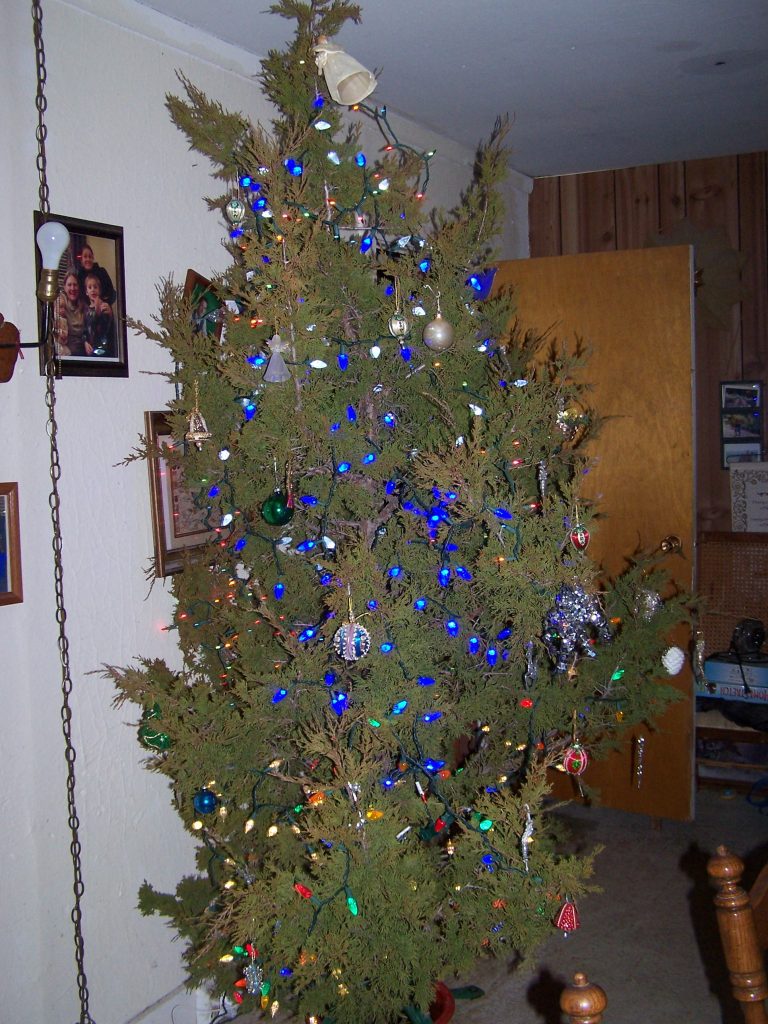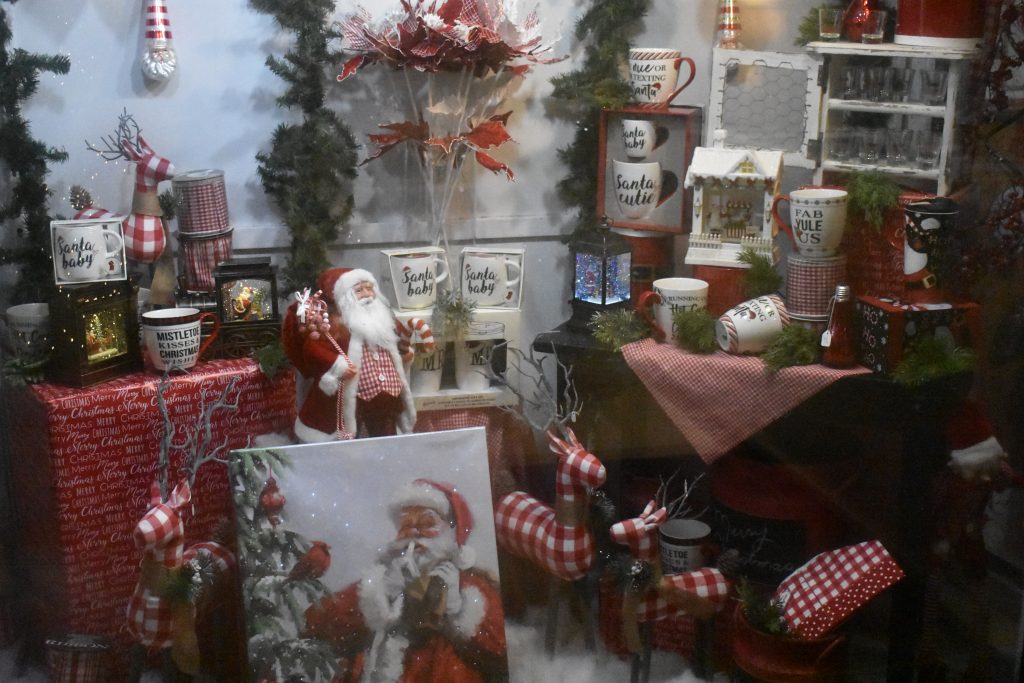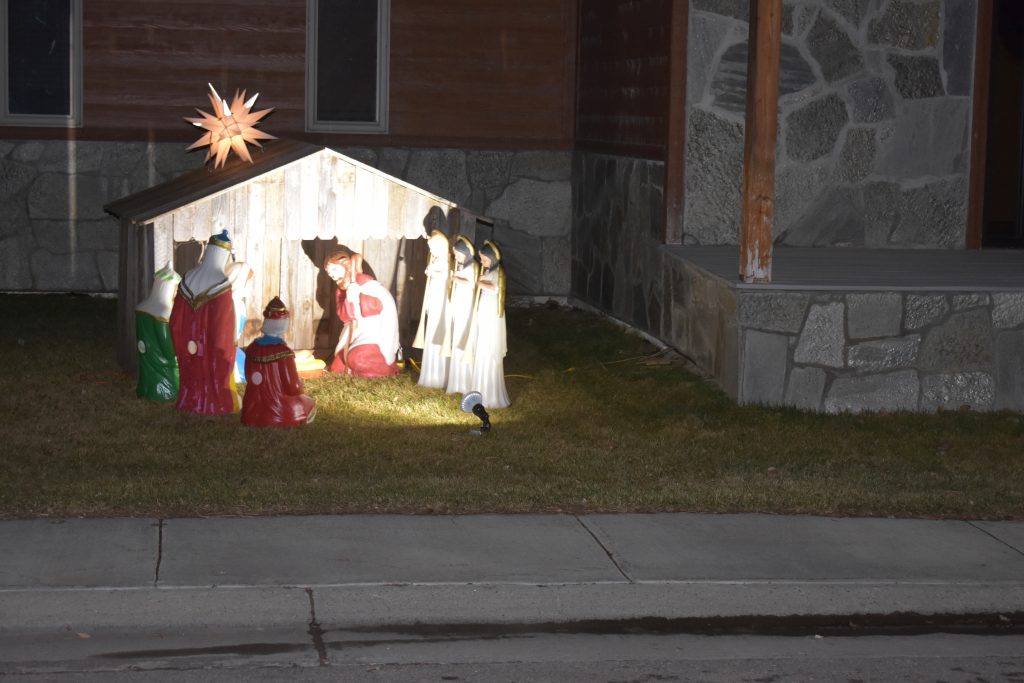Featured Events
Christmas on the Wyoming Frontier

Rural churches, like this one Arvada, Wyoming, held Christmas services during the season
December 25 was chosen as Christmas, or the birth of Jesus, as it is the date of the winter solstice on the Roman calendar and it is nine months after March 25, the vernal equinox and a date linked to the conception of Jesus. There are many traditions that we associate with Christmas, and they are a melting pot of various celebrations brought to us from all over the world. Christmas trees, Christmas stockings, gifts, Santa Claus and a family feast are all a part of Christmas. It was no different on the Wyoming frontier.
The first Europeans to settle here were soldiers, who were sent to the remote outposts to protect the settler trails. In the 1800’s, there was no flying back home for the holidays. The soldiers must have been homesick for their families, especially at Christmas. In many of the forts, there was the daily fear of an Indian attack, such mentioned in this portion of an article in The Wheatland World, January 5, 1900. “‘Fort Phil Kearney was invested by the Sioux, who had suddenly risen in the dead of winter.” The article was about the Fetterman Fight on Dec. 21, 1866.
However, determined to bring the spirit of Christmas alive on the Wyoming frontier, soldiers could be heard caroling at their remote outposts, or the regimental band might play Christmas carols. A soldier might ride out and return with some sage hens, or a fat buck deer. The cook would fix a special dinner from whatever was available.
There were also Christmas dances, especially among the officers and their wives. Such was the case at Fort Laramie on Christmas night of 1866, when a nearly dead civilian, John “Portugee” Phillips, staggered into the gala party carrying dispatches from the besieged Fort Phil Kearney, 236 miles away.
After the frontier was safe for families, the homesteaders came. Homesteading families struggled financially, making their homes in the wilderness. In spite of the harsh living conditions, parents tried to give their children a festive holiday.

If a family homesteaded near a juniper draw, or where there were pine trees, the father and perhaps one of the youngsters would ride out horseback, find a tree that was fairly well shaped, and bring it home either across the saddle or pulled across the snow behind the horse.
Decorations would be homemade, carved wooden ornaments, colorful rags, cookies, gingerbread men, ropes of cranberries and popcorn and paper garlands, perhaps made as school projects. Even last year’s Christmas Cards were hung on the tree to give it a festive look.
If the homestead didn’t have room for a tree, and many homes were very small, wreaths of greenery or even evergreen branches were brought in and decorated, their fragrance making the house smell like Christmas.
Today, with most houses have central heat, we forget that the Christmas stockings were hung by a fireplace, and that Santa, as in The Night Before Christmas poem, was said to come down the fireplace chimney. Many rural homesteads did not have a fireplace, but a wood or coal burning stove. Stockings, often adult-size socks, so they would hold more gifts, were hung anywhere they could find a space, and Santa obviously came through the front door.
Stockings were filled with candy and often fruit, apples or oranges. For homesteaders in Wyoming, fresh fruit was not readily available like it is today and was considered as much of a treat as candy. Mary Betz, whose family homesteaded near Clearmont, said that one Christmas her father, on a trip to town, picked up a big sack of apples for the youngster’s Christmas.

Instead of shopping in town, homemade gifts were the rule for many children who were raised on the homestead. Wooden toys, handmade rag dolls, corn husk dolls, sachets, pillows, or embroidered handkerchiefs were made. Scarves, hats, mittens and socks had to be knitted by young girls or busy housewives. Home sewn quilts were given as gifts as well, and some have been passed on through the generations.
A rite of passage for boys would be receiving a .22 rifle or a Barlow pocket knife. Fortunate girls might find a doll with a China head, and a full wardrobe of clothes.
Starting in 1934, Sears Roebuck and Co, first published their ‘Wish Book’ as a separate catalog, which featured mostly toys and Christmas gifts. These were mailed to area residents, and rural children waited eagerly to flip through the colorful pages and make out their Santa wish list.
Montgomery (Monkey) Wards also had ‘Wish Books’ and in 1939 was instrumental in creating a Christmas song that is still being played on radio stations 82 years later. As part of a Christmas promotional campaign, Montgomery Ward’s staff writer Robert May created Rudolph, the Red-Nosed Reindeer, a fantasy story that shows children that everyone has special qualities, and we don’t all have to be the same.
Seven years later, six million copies of the poem were distributed in a storybook, and country singer Gene Autry popularized it as a song. Starting in 1948, Rudolph was the star in several cartoons as well.
A family dinner was a part of a rural families’ Christmas. Plump sage grouse, domestic turkey or a goose might be the main course, but it could also be venison, or a smoked ham that had been saved over especially for Christmas from the fall butchering.
Jams and jellies, preserved from home grown raspberries, strawberries, or wild gooseberries and chokecherries, were served on homemade yeast rolls with hand-churned butter. Potatoes could be kept in the ‘root cellar’ for months, and were cooked, mashed and served with homemade gravy. Homemade pickles and possibly pickled beets were a part of the menu as well. Canned beans and corn, from last summer’s garden were eaten as the side dishes.
Fresh cream might be whipped for topping for the pumpkin or even squash pie, the filling having been canned the fall before. Mincemeat pie and fruitcake were staples as well.
As a preview of the season, schools would hold Christmas programs before school was dismissed for Christmas break. Children from all grades would participate with songs and skits and usually a nativity scene and reading from the Bible. Proud parents and grandparents would attend to show their support of the nervous young performers. Santa would come in at the end of the program, passing out small treat bags and listening to children’s Christmas wishes.

As today, churches held services to celebrate the season. In The Daily Enterprise, December 26, 1911: St. Peters Church Festival Of Lights: Sunday evening at the old city hall saw one of the most beautiful and impressive services it has ever been the privilege of the Sheridan people to attend. The occasion was a combination church service and Sunday School festival, and the central and command feature was a celebration of the Festival of Lights, a service adapted from the liturgy of the Greek church. The service began with the singing of hymns and recitation of Psalms that laid emphasis upon the spiritual darkness of the world before the coming of Christ. As the minister told the story of spiritual darkness, the electric lights were turned out. Thereupon as he spoke of Christ coming into the world as the light of the world, a candle was lighted upon the improvised altar From this light four smaller candles were lighted, representing the four gospels that tell us of the light of the world. Four little choir boys, fittingly appareled, took these smaller candles, and passed among the congregation lighting the candle with which each one had been provided. Soon the room, which had been in darkness, was ablaze with the lights of over two hundred candles. While the congregation continued to light the building with these numerous candles, Dean Cross delivered an appropriate address on “Light ” At the close of the address, the candles were blown out and amidst the darkness of the hall the Christmas tree burst forth in a glory of electric lights— the prettiest Christmas tree, no doubt, the eyes of those present had ever seen. The choir sang a number of old fashioned Christmas carols. Master Hayward in a special carol solo, added much to the sweetness and beauty of the service. In the new church, with more appropriate surroundings, Dean Cross promises an even more beautiful service next year.
Before 1970 many rural Wyoming residents didn’t even have electricity, depending instead on propane generators, (light plants) or even gas lights. Although some town folk had television sets, rural folks depended on battery powered radios for news and entertainment. Some AM Radio stations had a ‘story hour,’ for rural children. The Snow Queen by Hans Christian Anderson was read during the Christmas season. Radio stations also carried the NORAD (North American Aerospace Command) Santa report, which tracks Santa sleigh as it circles the globe on Christmas Eve. The tracking started in 1955, and gives minute by minute updates as to where Santa is. Today, the NORAD tracking is available on-line.
Through the years, Christmas traditions have changed, but in many respects they have remained much the same. Although it is more commercialized these days, there still seems to be something about the Christmas Spirit and the glittering decorations that give people the feeling of good cheer and goodwill towards their fellow man. And isn’t that what Christmas is all about? Merry Christmas Everyone.


Ira Roadifer
December 11, 2021 at 4:51 pm
Good story and relates back to my childhood. I remember going out as a family looking for perfect tree. Christmas was a special time year all the home made pie’s and cookies. Thank you for the story.
cvannoy
December 12, 2021 at 2:23 pm
Glad you liked it. Bringing back memories is a good thing.
Bob Betz
December 12, 2021 at 10:01 pm
Very nice!! Well researched and nicely written!!! It brought back a lot of childhood memories especially Christmas mornings waking up early to find what Santa left under the tree. My favorite parts of the treat bags after the Christmas programs were the peanuts and ribbon candy.
CYNTHIA VANNOY
December 13, 2021 at 12:29 pm
Glad you liked it. Glad it brought back good memories.